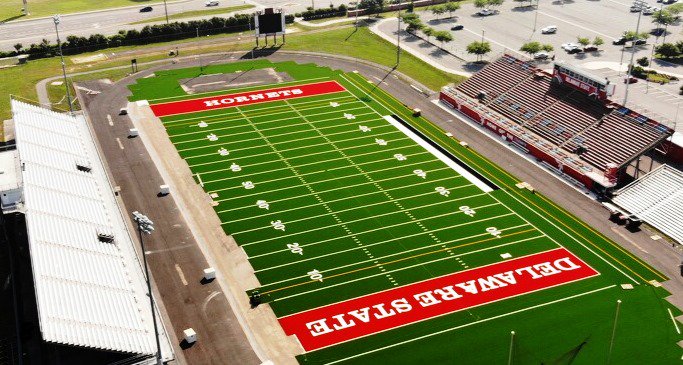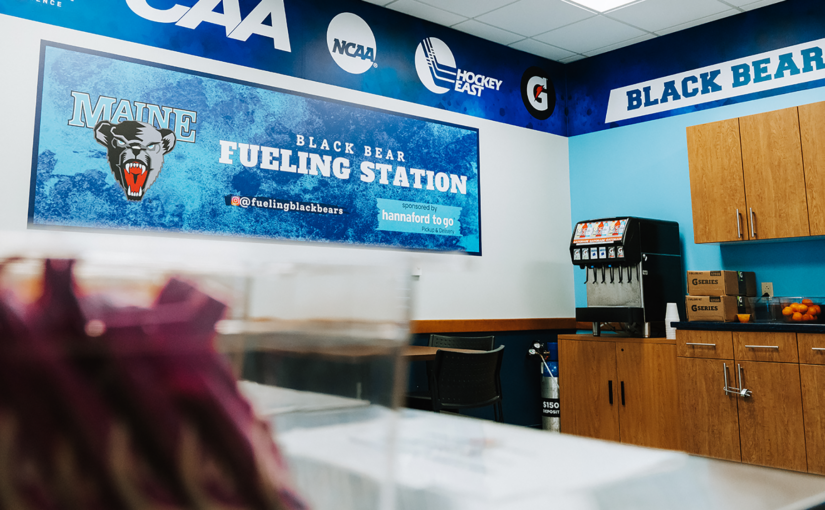Facility projects can stall over disputes between schools, neighbors
Funding is often the biggest obstacle to athletic facility projects, but in some communities across America, it’s the neighbors.
As more schools look to upgrade their stadiums and field houses, nearby residents are growing more vocal in their opposition to such projects. Facility improvements can include new lighting and audio systems, or towering bleachers, press boxes and scoreboards. Homeowners fear that the changes will infringe on their quality of life or drive down property values. That can lead to heated debates at school board meetings, where opponents try to block the project.

In New York, one high school’s renovations included new bleachers, which were constructed just yards away from neighboring properties. Residents continue to fight for the structure’s removal, arguing liability and safety concerns. In Wisconsin, neighbors stood against a stadium project that would have included a new audio system and the installation of LED lights. The school has not hosted an on-campus football game in nearly 20 years, but homeowners were concerned with the noise and light pollution that the project might bring.
Those proposals are not unlike the planned renovation at Mountain View-Los Altos High School District in central California. Last fall, the school board gave two of its high schools permission to move forward on a plan that, among other improvements, would affix permanent lighting at both stadiums. The project does not have final approval, but administrators are developing a usage plan they hope will win decisive support among the community and board.
“I think the biggest issue is the neighbors felt like we were going to push this through without any support, that we weren’t going to be a good neighbor,” said Shelley Smith, Mountain View High School athletic director and football coach. “You’re not going to please everybody, and that’s where we’re at right now — the point of what’s reasonable, what’s not. We’re trying to put a reasonable policy together.”
Mountain View and Los Altos high schools are the only public schools in the San Jose area that do not have lights at their stadiums. For football games, Mountain View occasionally rents lights — the portable lighting systems commonly used by road construction crews — but the coverage is limited and they cost up to $3,500 per game.
Smith said academics is the biggest catalyst for the proposed upgrades. Mountain View football players have to be pulled early from classes for pregame warmups. To beat the setting sun, games start before school lets out, so Smith said it might not be until halftime when the stands begin to fill in with students and parents.
“By being able to extend practice times and have contests into the evening would enable us to keep the kids in class, which is an overriding factor,” Smith said.
“And our attendance probably quadruples when we’re able to play in the evening under temporary lights. Those games have been outstanding for us; we get close to a couple thousand people.”
Smith said the primary concern among neighbors is the noise. The thought of a new-and-improved public address system, along with the idea that upgrades would invite organizations to use the stadium seven days a week, left a bad impression. But technology has come a long way, and manufacturers now sell products that dramatically reduce spillage into nearby homes.
Ephesus, which provides lighting solutions for everything from professional stadiums to recreation leagues, has been part of the technology revolution. Mike Quijano, director of sales and business development, said light pollution concerns were reasonable with metal-halide systems, but companies like Ephesus have transitioned to LED lighting.
“Because LED is a much smaller light source, there’s the opportunity to have better control for how that light is distributed,” Quijano said. Not only can newer systems reduce light spillage, but they also can instantly power on and off. With metal-halide lighting, operators might have to wait 15 minutes for the systems to power down.
The same can be said for audio systems. Decades ago, speakers would blast sound every which way across stadiums, but technology has helped them become more precise, limiting noise pollution into neighboring properties.
Quijano has had conversations with athletic directors who get pushback from homeowners. He tells them that step one is education, helping neighbors understand that reputable companies manufacture products that all but eliminate problems. But additional efforts must be made at the local level, and that’s where Smith and Mountain View administrators stand today.
Smith’s school district is in the process of developing a policy that would spell out how the improved stadium would be used. That includes limiting access to outside groups to weekends only, and without lights or audio. The district also would adopt a curfew for its lights, and limit their usage to a specific number of games for each sport. Teams would not be permitted to use lights or PA systems for practices.
The plan is to later present this policy to the neighbor committee in hopes that it alleviates their anxiety.
“The thing we tried to do is identify some of the biggest concerns and fears,” Smith said. “One of those was once you get the lights they’ll never come off, and the PA system will be blaring continuously.”
Transparency and communication have bridged the divide between residents and the school system. While other districts throughout the nation struggle to rally support for their projects, Smith is confident that the school will find common ground and eventually get its lights.
“I think this is going to go through,” Smith said. “We just have to settle on a policy that’s acceptable for everyone.”





